S. Sitharama Iyengar, Richard R. Brooks, Clemson University9781584883838, 1-58488-383-9
Table of contents :
c3839fm……Page 1
DISTRIBUTED SENSOR NETWORKS……Page 3
Preface……Page 6
Contributors……Page 7
Contents……Page 11
Section I: Overview……Page 15
Table of Contents……Page 0
1.1 Introduction……Page 17
1.2 Example Applications……Page 18
1.3 Computing Issues in Sensor Networks……Page 19
1.4 Requirements of Distributed Sensor Networks……Page 21
1.6 Mobile-Agent Paradigm……Page 22
1.8 Contrast with Traditional Computing Systems……Page 23
References……Page 24
2.2 Sensor Networks: Description……Page 25
2.3 Sensor Network Applications, Part 1: Military Applications……Page 26
2.3.1 Target Detection and Tracking……Page 27
2.3.2 Application 1: Artillery and Gunfire Localization……Page 29
2.3.3 Application 2: Unmanned Aerial Vehicle Sensor Deployment……Page 30
2.3.4 Target Classification……Page 32
2.3.5 Application 3: Vehicle Classification……Page 33
2.3.6 Application 4: Imaging-Based Classification and Identification……Page 35
2.4 Sensor Network Applications, Part 2: Civilian Applications……Page 37
2.4.1 Application 5: Monitoring Rare and Endangered Species……Page 38
2.4.2 Application 6: Personnel Heartbeat Detection……Page 39
References……Page 40
3.2 Benefits and Limitations of DSNs……Page 42
3.3.1 Grosch’s Law Overruled……Page 43
3.3.6 Open Systems……Page 44
3.4 Taxonomy of DSN Architectures……Page 45
3.4.1 Input……Page 46
3.4.2 Computing……Page 48
3.4.3 Communications……Page 50
3.4.4 Programming……Page 52
3.4.9 Security……Page 54
References……Page 55
4.1 Problem Statement……Page 57
References……Page 59
Section II: Distributed Sensing and Signal Processing……Page 60
5.1 Introduction……Page 63
5.2.2 Discrete-Time System……Page 64
5.3.1 The z-Transform……Page 65
5.3.2 Discrete-Time Fourier Transform……Page 66
5.3.4 The DFT……Page 67
5.4.1 Frequency Response of Digital Filters……Page 68
5.4.3 Example: Baseline Wander Removal……Page 69
5.5.1 Sampling Continuous Analog Signal……Page 71
5.5.2.2 Up-Sampling (Interpolation)……Page 74
Appendix 5.1……Page 76
Appendix 5.2……Page 77
Appendix 5.3……Page 78
Appendix 5.4……Page 79
6.2 Motivation……Page 81
6.3.1 Image Spectrum……Page 83
6.3.2 Image Dimensionality……Page 84
6.3.4 Analog to Digital Images……Page 85
6.4 Image Domains: Spatial, Frequency and Wavelet……Page 87
6.5.1 Thresholding……Page 89
6.5.3 Contrast Stretching and Histogram Equalization……Page 90
6.5.5 Level Slicing……Page 91
6.6 Area-Based Operations……Page 92
6.6.3 Median Filter……Page 93
6.6.4 Edge Detection……Page 94
6.6.5 Morphological Operators……Page 95
6.7 Noise Removal……Page 96
6.8.1 Edges……Page 97
6.8.2 Hough Transform: Detecting Shapes……Page 98
6.8.3 Segmentation: Surfaces……Page 99
6.9.1 Registration……Page 100
6.9.2 Geometric Transformations……Page 101
6.9.3 Calibration……Page 102
6.10 Compression and Transmission: Impacts on a Distributed Sensor Network……Page 103
6.11 More Imaging in Sensor Network Applications……Page 104
References……Page 105
7.1 Introduction……Page 107
7.2 A Signal Model for Sensor Measurements……Page 109
7.2.1 Example: Temporal Point Sources……Page 110
7.3.1 Soft Decision Fusion……Page 112
7.3.2 Hard Decision Fusion……Page 114
7.4.1 Soft Decision Fusion……Page 117
7.4.2 Hard Decision Fusion……Page 119
7.4.3 Numerical Results……Page 120
7.5 Conclusions……Page 122
References……Page 123
8.1 Introduction……Page 125
8.2 Self-Organization of the Network……Page 126
8.3.1 Dynamic Space–Time Clustering……Page 127
8.4 Moving Target Resolution……Page 128
8.5 Target Classification Using Semantic Information Fusion……Page 130
8.6.1 Localization Using Signal Strengths……Page 133
8.6.2 Localization Using Time Delays……Page 134
8.6.3 Experimental Results for Localization Using Signal Strengths……Page 135
8.7 Peaks for Different Sensor Types……Page 139
References……Page 142
9.1 Introduction……Page 144
9.2 Computation Environment……Page 145
9.3 Inter-Cluster Tracking Framework……Page 147
9.4 Local Parameter Estimation……Page 149
9.5.1 Pheromone Routing……Page 153
9.5.2 The EKF……Page 155
9.5.3 Bayesian Entity Tracking……Page 158
9.6.1 Pheromone Routing……Page 159
9.6.3 Bayesian Belief Net……Page 161
9.7 The CA Model……Page 162
9.8.1 Linear Tracks……Page 166
9.8.3 Nonlinear Crossing Tracks……Page 167
9.8.4 Intersecting Tracks……Page 168
9.8.5 Track Formation Effect on Network Traffic……Page 171
9.8.6 Effects of Network Pathologies……Page 174
9.9 Collaborative Tracking Network……Page 176
9.10 Dependability Analysis……Page 182
9.12 Multiple Target Tracking……Page 184
9.13 Conclusion……Page 187
References……Page 192
10.1 Sensor Network Applications, Constraints, and Challenges……Page 194
10.2 Tracking as a Canonical Problem for CSIP……Page 195
10.2.1 A Tracking Scenario……Page 196
10.2.2 Design Desiderata in Distributed Tracking……Page 197
10.3.1 Tracking Individual Targets……Page 198
10.3.2 Information-Based Approaches……Page 199
10.4.1 Counting the Number of Targets……Page 202
10.4.3 Shadow Edge Tracking……Page 204
10.5 Discussion……Page 206
Acknowledgments……Page 207
References……Page 208
11.2 Sensor Statistical Confidence Metrics……Page 210
11.3 Atmospheric Dynamics……Page 211
11.3.1 Acoustic Environmental Effects……Page 212
11.3.2 Seismic Environmental Effects……Page 213
11.3.4 Optical Environmental Effects……Page 214
11.3.5 Environmental Effects on Chemical and Biological Detection and Plumes Tracking……Page 215
11.4 Propagation of Sound Waves……Page 217
References……Page 220
12.1.1 What Is Atmosphere?……Page 221
12.2.1 Visible-Spectrum Cameras……Page 223
12.2.2 IR Sensors……Page 224
12.2.5 Multispectral Sensors……Page 225
12.3 Physics-Based Solutions……Page 226
12.4 Heuristics and Nonphysics-Based Solutions……Page 227
References……Page 231
13.1 Introduction……Page 233
13.2.1 Basic Considerations……Page 235
13.2.2 Narrowband Model with No Scattering……Page 238
13.2.3 Narrowband Model with Scattering……Page 241
13.2.4 Model for Extinction Coefficients……Page 244
13.3 Signal Processing……Page 248
13.3.1.2 Wideband AOA Estimation without Scattering……Page 249
13.3.1.4 AOA Experiments……Page 251
13.3.2 Localization with Distributed Sensor Arrays……Page 253
13.3.2.1 Model for Array of Arrays……Page 254
13.3.2.2 CRBs and Examples……Page 257
13.3.2.3 TDE and Examples……Page 258
13.3.3 Tracking Moving Sources……Page 267
13.3.4 Detection and Classification……Page 268
13.4 Concluding Remarks……Page 272
References……Page 273
14.1 Introduction……Page 279
14.2 The BSS Problem……Page 280
14.3.1 Bayesian Source Number Estimation……Page 282
14.3.3 Variational Learning……Page 283
14.4.1 Distributed Hierarchy in Sensor Networks……Page 284
14.4.2 Posterior Probability Fusion Based on Bayes’ Theorem……Page 286
14.5.1 Evaluation Metrics……Page 287
14.5.2 Experimental Results……Page 288
14.5.3 Discussion……Page 291
References……Page 292
Section III: Information Fusion……Page 294
15.1 Introduction……Page 297
15.2.1 System Characteristics……Page 298
15.2.2 Operational Problems……Page 299
15.2.3 Benefits of Data Fusion……Page 300
15.3.2 Representing System Behavior……Page 301
15.3.2.2 Goal-Seeking Paradigm……Page 302
15.4.1.2 Uncertainties……Page 303
15.4.2 Applying Data Fusion……Page 304
References……Page 305
16.1 Introduction……Page 307
16.2 Classical Fusion Problems……Page 308
16.3 Generic Sensor Fusion Problem……Page 309
16.4 Empirical Risk Minimization……Page 311
16.4.1 Feedforward Sigmoidal Networks……Page 312
16.4.2 Vector Space Methods……Page 313
16.5 Statistical Estimators……Page 314
16.6 Applications……Page 315
16.7.1 Isolation Fusers……Page 318
16.7.2 Projective Fusers……Page 320
16.8 Metafusers……Page 323
References……Page 324
17.2 Genetic Algorithms……Page 327
17.3 Simulated Annealing……Page 328
17.4 Trust……Page 329
17.5 Tabu Search……Page 332
17.6 Artificial Neural Networks……Page 333
17.7 Fuzzy Logic……Page 334
17.8 Linear Programming……Page 335
References……Page 337
18.1 Introduction……Page 340
18.2 Overview of Estimation Techniques……Page 342
18.2.1 System Models……Page 343
18.2.2 Optimization Criteria……Page 345
18.2.3 Optimization Approach……Page 348
18.2.4 Processing Approach……Page 350
18.3.1 Derivation of WLS Solution……Page 351
18.3.2 Processing Flow……Page 354
18.3.3 Batch Processing Implementation Issues……Page 355
18.4.1 Deviation of Sequential WLS Solution……Page 357
18.4.2 Sequential Estimation Processing Flow……Page 358
18.5.1 Filter Divergence and Process Noise……Page 360
18.5.3 Maneuvering Targets……Page 361
References……Page 362
19.1 Problem Statement……Page 365
19.2 Coordinate Transformations……Page 366
19.3 Survey of Registration Techniques……Page 369
19.4 Objective Functions……Page 371
19.5 Results from Meta-Heuristic Approaches……Page 373
19.6 Feature Selection……Page 379
19.7 Real-Time Registration of Video Streams with Different Geometries……Page 382
19.8 Summary……Page 392
References……Page 393
20.1 Introduction……Page 395
20.2 Signal Calibration and Measurement Estimation……Page 396
20.2.1 Degradation Monitoring……Page 398
20.3 Sensor Calibration in a Commercial-Scale Fossil-Fuel Power Plant……Page 400
20.3.1 Filter Parameters and Functions……Page 401
20.3.3 Filter Performance Based on Experimental Data……Page 402
20.3.3.1 Case 1 (Drift Error and Recovery in a Single Sensor)……Page 403
20.4 Summary and Conclusions……Page 405
Appendix A: Multiple Hypotheses Testing Based on Observations of a Single Variable……Page 408
References……Page 410
21.2 Symbolic Dynamics……Page 412
21.2.2 Determination of epsilon-Machines……Page 413
21.3 Formal Language Measures……Page 414
21.5 Experimental Verification……Page 416
21.6 Conclusions and Future Work……Page 419
References……Page 420
22.2 Information Processing in Distributed Networks……Page 421
22.3.1 Sensor Fusion Research……Page 423
22.4 Probabilistic Framework for Distributed Processing……Page 424
22.4.1 Sensor Data Model for Single Sensors……Page 425
22.4.2 A Bayesian Scheme for Decentralized Data Fusion……Page 427
22.4.2.1 Classical Estimation Techniques……Page 428
22.4.3 Distributed Detection Theory and Information Theory……Page 429
22.5 Bayesian Framework for Distributed Multi-Sensor Systems……Page 431
22.5.1 Information-Theoretic Justification of the Bayesian Method……Page 433
22.5.2 Information Measures……Page 434
References……Page 435
23.1 Motivation……Page 438
23.2.1 Instruments for Multispectral Data Acquisition……Page 439
23.2.3 Multisensor Array Technology for Superresolution……Page 440
23.3 Mathematical Model for Multisensor Array-Based Superresolution……Page 441
23.3.1 Image Reconstruction Formulation……Page 443
23.3.2 Other Approaches to Superresolution……Page 444
23.4 Color Images……Page 445
23.5 Conclusions……Page 446
References……Page 447
Section IV: Sensor Deployment and Networking……Page 450
24.1 Introduction……Page 453
24.1.1 Chapter Outline……Page 454
24.2 Sensor Detection Model……Page 455
24.3.1 Virtual Forces……Page 458
24.3.2 Overlapped Sensor Detection Areas……Page 460
24.3.4 Procedural Description of the VFA……Page 461
24.3.7 Case Study 2……Page 463
24.4 Uncertainty Modeling in Sensor Node Deployment……Page 467
24.4.1 Modeling of Nondeterministic Sensor Node Placement……Page 468
24.4.2 Uncertainty-Aware Sensor Node Placement Algorithms……Page 469
24.4.3 Procedural description……Page 472
24.4.4 Simulation Results on Uncertainty-Aware Sensor Deployment……Page 473
24.4.4.2 Case Study 2……Page 474
24.4.5 Case Study 3……Page 478
References……Page 480
25.1.2 Example……Page 482
25.1.3 Computational Issues……Page 483
25.2 Importance of Sensor Deployment……Page 484
25.3.2 Eisenstein Integers……Page 485
25.3.3 Main Theorem……Page 486
25.4.1 Introduction……Page 487
25.4.2.1 Surveillance Region……Page 489
25.4.2.2 Sensor Detection Distributions……Page 490
25.4.2.3 NP-Completeness of Sensor Deployment Problem……Page 491
25.4.2.4 Sensor Detection Probability Under Independence Condition……Page 493
25.4.3.1 Genetic Encoding for Sensor Deployment……Page 495
25.4.3.3 Selection of Candidates……Page 496
25.4.3.4 Implementation of Genetic Operators……Page 497
25.4.4 Computational Results……Page 498
References……Page 502
26.1 Introduction……Page 504
26.2.2 A General Method Using GAs……Page 505
26.2.3.2 Crossover, Mutation, and Inversion……Page 508
26.3.1 Sensor Nodes……Page 509
26.3.3 Mobile Agent Routing……Page 510
26.3.4 Objective Function……Page 511
26.3.5 NP-Hardness of MARP……Page 513
26.4.1 Two-level Genetic Encoding……Page 514
26.4.2.2 Crossover Operator……Page 515
26.5.1 Simulation Results……Page 516
26.5.2 Algorithm Comparison and Discussion……Page 519
26.6 Conclusions……Page 522
References……Page 523
Appendix A……Page 524
27.2 Layered Architecture and Network Components……Page 526
27.2.1 Layering and OSI Model……Page 527
27.2.2 TCP/IP Layering……Page 531
27.2.3.1 Repeater……Page 532
27.2.3.3 Router……Page 533
27.3 Link Sharing: Multiplexing and Switching……Page 534
27.3.1.1 FDM……Page 535
27.3.1.2 TDM……Page 536
27.3.2 Switching Techniques……Page 538
27.3.2.1 Circuit Switching……Page 539
27.3.2.3 Packet Switching……Page 540
27.4.1 Serial and Parallel Modes……Page 543
27.4.2.1 Asynchronous Transmission……Page 544
27.4.2.2 Synchronous Transmission……Page 545
27.5.1 Terminology and Model……Page 546
27.5.2 Frequency Reuse and Channel Assignment……Page 547
27.5.4 Multiple Access Technologies……Page 548
27.5.5 New-Generation Wireless Networks……Page 550
27.6 WLANs……Page 551
Bibliography……Page 552
28.1 Introduction……Page 553
28.2 Location-Centric Computing……Page 555
28.4.1.2 SN_DeleteRegion……Page 556
28.4.1.6 SN_Barrier……Page 557
28.4.2.1 Message Formats and Address Resolution……Page 558
28.4.2.3 Routing within a Region……Page 560
28.5 Target Tracking Application……Page 561
28.6 Testbed Evaluation……Page 564
28.6.3 Overall Per-Node Bandwidth Consumption……Page 565
Reference……Page 569
29.1 Introduction……Page 570
29.2.1 The Publish/Subscribe API……Page 571
29.2.3 Matching in Naming……Page 572
29.3 Directed Diffusion Protocol Family……Page 573
29.3.1 Two-Phase Pull Diffusion……Page 574
29.3.2 Push Diffusion……Page 575
29.3.3 One-Phase Pull Diffusion……Page 576
29.4 Facilitating In-Network Processing……Page 577
29.4.1 Implemented Filters……Page 578
29.5.1 Implementation Experience……Page 579
29.5.2.1 Goals, Metrics, and Methodology……Page 581
29.5.2.4 Effects of Radio Energy Model……Page 582
29.5.3 Evaluation of In-Network Processing……Page 585
29.5.3.1 Goals and Methodology……Page 586
29.5.3.2 Nested Queries Benefits……Page 587
29.5.4.1 One-Phase Push versus Two-Phase Pull Diffusion……Page 588
29.5.4.3 Discussion……Page 589
29.6 Related Work……Page 590
References……Page 591
30.2 Threats……Page 594
30.3.2 Message Authentication……Page 595
30.4.2 Limited Computational Capability……Page 596
30.5.1 Physical Layer……Page 597
30.5.4 Transport Layer and Above……Page 598
30.6 Security Mechanisms……Page 599
30.6.2 Encryption……Page 600
30.6.2.2 Block Encryption Algorithms……Page 601
30.6.3.1 Digital Signature Algorithms……Page 602
30.6.4 Key Management……Page 603
30.6.4.2 Public key cryptography……Page 604
30.7 Other Sources……Page 605
References……Page 606
31.1.1 Elements of a Service System……Page 609
31.1.2 Customer Satisfaction……Page 611
31.2 QoS in Networking……Page 612
31.2.1 Introduction……Page 613
31.2.2 Characteristics of Network QoS Metrics……Page 614
31.3.1 Performance Analysis Using Queueing Models……Page 615
31.3.2 Performance Analysis Using Large Deviations Theory……Page 616
31.4.1 Case 1: Delay and Jitter QoS Metrics Using Queueing Networks……Page 619
31.4.2 Case 2: Loss QoS Metrics Using Fluid Models……Page 621
References……Page 623
32.1 Introduction……Page 624
32.2 Network Daemons……Page 625
32.3.1 Path Computation……Page 627
32.3.1.1 Probabilistic Delay Guarantees……Page 630
32.3.1.3 Internet Implementation……Page 631
32.3.2 Transport Control for Throughput Stabilization……Page 632
32.4 Daemons for Ad Hoc Mobile Networks……Page 634
32.4.1 Connectivity-Through-Time Concept……Page 635
32.4.2.2 Routing……Page 637
32.4.2.3 Transport Method……Page 638
32.4.3 Experimental Results……Page 639
Acknowledgments……Page 643
References……Page 644
Section V: Power Management……Page 645
33.1 Introduction……Page 647
33.2 Sources of Power Consumption……Page 648
33.3 Power Optimizations: Different Stages of System Design……Page 649
33.4.1 Supply Voltage, Frequency and Threshold-Voltage Scaling……Page 650
33.4.2 Shutting Down Idle Components……Page 652
33.4.2.1 Leakage Control Techniques for Memories……Page 653
33.4.2.2 Multiple Low-Power Modes……Page 654
33.4.2.3 Adaptive Communication Hardware……Page 656
33.4.3 Computational Offloading……Page 657
References……Page 658
34.1 Introduction……Page 661
34.1.2 I/O-Centric DPM……Page 662
34.2.2.1 Hardware Platform……Page 663
34.2.2.2 Software Architecture……Page 664
34.2.3 Experimental Results……Page 666
34.3.1 Optimal Device Scheduling for Two-State I/O Devices……Page 669
34.3.1.1 Pruning Technique……Page 671
34.3.1.2 The EDS Algorithm……Page 674
34.3.1.3 Experimental Results……Page 675
34.3.2 Online Device Scheduling……Page 680
34.3.2.1 Online Scheduling of Two-State Devices: LEDES Algorithm……Page 681
34.3.3 Low-Energy Device Scheduling of Multi-State I/O Devices……Page 682
34.3.3.1 Online Scheduling for Multi-State Devices: MUSCLES Algorithm……Page 685
34.3.4 Experimental Results……Page 686
34.4 Conclusions……Page 688
References……Page 689
35.1 Introduction……Page 691
35.2 System Assumptions……Page 692
35.3 Caching-Based Communication……Page 693
35.4 Experimental Results……Page 697
35.5 Spatial Locality……Page 699
References……Page 703
36.1 Introduction and Motivation……Page 705
36.2 High-Level Architecture……Page 706
36.3.1 Data Decomposition and Parallelization……Page 708
36.3.2 Naive Communication……Page 709
36.3.3 Message Vectorization……Page 710
36.3.4 Message Coalescing……Page 711
36.3.5 Message Aggregation……Page 712
36.4.1 Benchmark Codes……Page 713
36.4.2 Modeling Energy Consumption……Page 714
36.5.1 Energy Breakdown……Page 715
36.5.2 Sensitivity Analysis……Page 717
36.5.3 Impact of Inter-Nest Message Optimization……Page 721
36.5.4 Impact of Overlapping Communication with Computation……Page 723
36.5.5 Communication Error……Page 724
36.6 Our Compiler Algorithm……Page 725
36.7 Conclusions and Future Work……Page 726
References……Page 727
37.1 Introduction……Page 729
37.2 Sensor-Centric Reliable Routing……Page 730
37.3 Reliable Routing Model……Page 731
37.4.1 Complexity Results……Page 732
37.4.2 Analytical Results……Page 733
37.5.1 Evaluation Metric……Page 735
37.5.2 Heuristics……Page 736
37.6.1 Algorithm Analysis……Page 737
37.7 Conclusions……Page 741
References……Page 742
Section VI: Adaptive Tasking……Page 743
38.1 Introduction……Page 745
38.2 Architecture for Query Processing in Sensor Networks……Page 747
38.2.1 Architectural Overview……Page 748
38.2.3 Query Language……Page 749
38.2.4 Query Dissemination and Result Collection……Page 751
38.2.5 Query Processing……Page 752
38.3.1 Lifetime……Page 754
38.3.2.2 Packet Merging……Page 755
38.3.4 Acquisitional Query Processing……Page 756
38.4.1 Berkeley Botanical Garden Deployment……Page 757
38.4.2 Simulation Experiments……Page 759
38.5.2 Distributed Query Processing……Page 761
38.6.2 Nested Queries, Many-to-Many Communication, and Other Distributed Programming Primitives……Page 762
References……Page 763
39.2 Resource Constraints……Page 767
39.3 Example Application Scenario……Page 768
39.4 Distributed Dynamic Linking……Page 770
39.5 Classifier Swapping……Page 773
39.6 Dependability……Page 775
39.7 Related Approaches……Page 777
References……Page 779
40.2 Mobile-Code Models……Page 781
40.3 Distributed Dynamic Linking……Page 783
40.4 Daemon Implementation……Page 784
40.5 Application Programming Interface……Page 789
40.6 Related Work……Page 791
References……Page 792
41.1 Introduction……Page 795
41.2 Mobile-Agent-Based Distributed Computing……Page 796
41.2.1 Mobile-Agent Attributes and Life Cycle……Page 797
41.2.2 Performance Evaluation……Page 798
41.3 The MAF……Page 803
41.4.2 The Integration Algorithm……Page 805
41.4.3 Mobile-Agent Itinerary……Page 808
41.5 Summary……Page 810
References……Page 811
42.2 Purposes and Benefits of Distributed Services……Page 813
42.3 Preview of Existing Distributed Services……Page 814
42.4 Architecture of a Distributed Sensor System……Page 816
42.5 Data-Centric Network Protocols……Page 817
42.6.1 Reconfigurable Smart Nodes……Page 818
42.6.2 Lookup Services……Page 820
42.6.4 Adaptation Services……Page 821
42.6.5 API for Lookup Services……Page 822
42.7.1.1 Mediators……Page 823
42.7.1.3 Sensor Agents……Page 825
42.7.2 Collaborative Signal Processing……Page 826
References……Page 827
43.1 Introduction……Page 829
43.2 Active Queries as Random Walks……Page 830
43.2.2 Rumor Routing……Page 831
43.2.3 ACQUIRE……Page 832
43.3 Active Queries with Direction……Page 833
43.3.2 LEQS……Page 835
43.3.4 Sensing Driven Querying……Page 836
References……Page 837
Section VII: Self-Configuration……Page 839
44.2 Top-Down Control……Page 841
44.3 Bottom-Up Reconfiguration……Page 844
44.4 Self-Organization Models……Page 846
References……Page 847
45.1 Problem Statement……Page 849
45.2 Continuous Models……Page 850
45.3 Discrete Models……Page 852
45.4 Characterization of Pathological Behavior……Page 853
References……Page 854
46.1.1 Characteristics of Biological Primitives……Page 856
46.1.3.1 Dictyostelium discoideum……Page 857
46.2.1 Cellular Automaton……Page 858
46.3.1 How the Biological Model Was Modified……Page 859
46.3.4 Application to the Routing Problem……Page 860
46.3.5 Tools Used……Page 861
46.3.6 Derivation of Parameters……Page 862
46.3.6.1 Spawn Frequency……Page 863
46.3.6.2 Repulsion Ratio……Page 864
46.3.6.5 Diffusion……Page 865
46.3.7.1 Conclusions on Errors……Page 866
46.3.8.1 Pheromone Simulation……Page 867
46.3.8.2 Pseudo-Proof……Page 868
46.3.9.1 What Is Gossip?……Page 869
46.4 Summary……Page 870
References……Page 871
47.1.2 Routing in WSNs……Page 872
47.2.1 Ising Model……Page 873
47.2.2 Fractals……Page 875
47.3.1 Cellular Automata Background……Page 877
47.4 Idealized Simulation Scenario……Page 878
47.5.1.1 Adapt Spin Glass Model to WSN Routing……Page 879
47.5.1.2 Spin-Glass Simulation Results……Page 880
47.5.2.1 Adapting Multi-Fractals to WSN Routing……Page 881
47.5.2.2 Multi-Fractal Simulation Results……Page 883
47.6 Protocol Comparison and Discussion……Page 885
Reference……Page 886
48.1.2 Stigmergy……Page 888
48.1.3 Trail Laying by Ants……Page 889
48.2.2 Routing of Data Packets……Page 890
48.2.4.2 Power-Aware Routing……Page 891
48.2.5 Algorithm……Page 892
48.3.1 Route Establishment……Page 893
48.3.2 Energy Distribution……Page 894
48.3.4 Effect of Noise……Page 895
48.4 Conclusion……Page 896
References……Page 898
49.1 Notation……Page 900
49.2 Background……Page 901
49.3 Graph Theory……Page 902
49.4 Erdos–Renyi Graphs……Page 903
49.5 Small-World Graphic……Page 904
49.6 Scale-Free Graphs……Page 907
49.7 Percolation Theory……Page 910
49.8 Ad Hoc Wireless……Page 912
49.9 Cluster Coefficient……Page 914
49.10 Mutuality……Page 917
49.11 Index Structure……Page 922
49.12 Graph Partitioning……Page 923
49.13 Expected Number of Hops……Page 925
49.14 Probabilistic Matrix Characteristics……Page 929
49.15 Network Redundancy and Dependability……Page 931
49.16 Vulnerability to Attack……Page 936
49.18 Summary……Page 937
References……Page 938
50.1 Introduction……Page 940
50.2 Related Work……Page 941
50.3 Link Properties……Page 942
50.3.1 Expected Link Lifetime……Page 943
50.3.2 Link Lifetime Distribution……Page 946
50.3.3 Expected New Link Arrival Rate……Page 948
50.3.5 Expected Link Change Rate……Page 951
50.3.6 Link Breakage Interarrival Time Distribution……Page 953
50.3.7 Link Change Interarrival Time Distribution……Page 955
50.3.8 Expected Number of Neighbors……Page 956
50.4 Simulations……Page 957
50.5 Applications of Link Properties……Page 961
50A.1 Joint Probability Density of v, phi and alpha……Page 962
References……Page 966
Section VIII: System Control……Page 967
51.2 Petri Nets……Page 968
51.3.1 Overview and Terminology……Page 969
51.3.2 Operational Command……Page 971
51.3.4 Collaborative Sensing……Page 972
51.5 Controller Design……Page 973
51.5.1 FSM Controller……Page 974
51.5.2 Vector Addition Controller……Page 976
51.5.3 Petri-Net-Based Control……Page 977
51.5.4 Performance and Comparison of Three Controllers……Page 978
51.5.4.1 FSM Controller……Page 979
51.5.4.2 VDES Modeled Controller……Page 980
51.5.4.3 Petri-Net-Modeled Controller……Page 982
51.6.1 Simulation Result……Page 983
51.7 Discussion and Conclusions……Page 984
Reference……Page 985
51A.1 Controllable Transitions……Page 986
51A.2 Uncontrollable Transitions……Page 989
51A.3.1 Define Controller Specifications……Page 990
51A.3.2 Controller Implementation for Unexplained Control Specifications……Page 991
51A.4 FSM and Vector Controller Implementation……Page 992
51A.5 Surveillance Network Petri Nets Plant Models……Page 997
Section IX: Engineering Examples……Page 1000
52.2 Overview of SensIT System Architecture……Page 1002
52.4 SenSoft Architectural Framework……Page 1004
52.5 Software Infrastructure……Page 1005
52.6 SenSoft Signal Processing……Page 1007
52.7 Component Interaction……Page 1008
52.8 An Example……Page 1009
References……Page 1013
53.1 Introduction……Page 1014
53.2 Bayesian Estimation and Noisy Sensors……Page 1016
53.4 Reducing the Uncertainty……Page 1017
53.6.1 Class I……Page 1019
53.6.3 Class III……Page 1020
53.7 Spatio-Temporal Dependencies and Wireless Sensors……Page 1021
53.8 Modeling and Dependencies……Page 1022
53.9 Online Distributed Learning……Page 1024
53.10 Detecting Outliers and Recovery of Missing Values……Page 1025
53.11 Future Research Directions……Page 1026
References……Page 1027
54.1 Introduction……Page 1029
54.2 The Monitoring System……Page 1030
54.3 Typical Studies Involving Plant Monitoring……Page 1031
54.4 Sensor Networks……Page 1032
54.5.2 Soil Data……Page 1033
54.6 Spatial and Temporal Scales: Different Monitoring Requirements……Page 1034
54.7 Network Characteristics……Page 1035
54.9 Data Utilization……Page 1036
References……Page 1037
55.1 Introduction……Page 1038
55.2 Characteristics of Mesh Networking Technology……Page 1039
55.3 Comparison of Popular Network Topologies……Page 1040
55.3.2 Transferring a Message within a Star Topology……Page 1041
55.4 Basic Guidelines for Designing Practical Mesh Networks……Page 1042
55.5 Examples of Practical Mesh Network Applications……Page 1043
55.5.1.1 Deployment Strategy and Implementation……Page 1044
55.5.1.2 The Results……Page 1045
55.5.2.1 Deployment Strategy and Implementation……Page 1046
55.5.2.2 The Results……Page 1047
55.5.3 Monitoring Cargo Shipments Using Leaf Nodes……Page 1048
55.5.3.1 Deployment Strategy and Implementation……Page 1049
55.5.3.3 The Results……Page 1050
55.5.4 Devising a Wireless Mesh Security System……Page 1051
References……Page 1053
Section X: Beamforming……Page 1055
56.1.1 Historical background……Page 1056
56.1.2 Narrowband versus Wideband Beamforming……Page 1057
56.1.3 Beamforming for Narrowband Waveforms……Page 1058
56.1.4 Beamforming for Wideband Waveforms……Page 1062
56.2 DOA Estimation and Source Localization……Page 1064
56.2.1 RF Signals……Page 1065
56.2.2.1 Parametric Methods……Page 1067
56.2.2.2 ML Beamforming……Page 1069
56.2.2.3 Time-Delay-Type Methods……Page 1070
56.2.2.4 Time-Delay Estimation Methods……Page 1072
56.3.1 Computer-Simulated Results for Acoustic Sources……Page 1074
56.3.2.1 CRB Based on Time-Delay Error……Page 1077
56.3.2.2 CRB Based on SNR……Page 1079
56.3.3 Robust Array Design……Page 1083
56.4.1 Implementation of a Radar Wideband Beamformer Using a Subband Approach……Page 1085
56.4.2 iPAQS Implementation of an Acoustic Wideband Beamformer……Page 1087
References……Page 1090
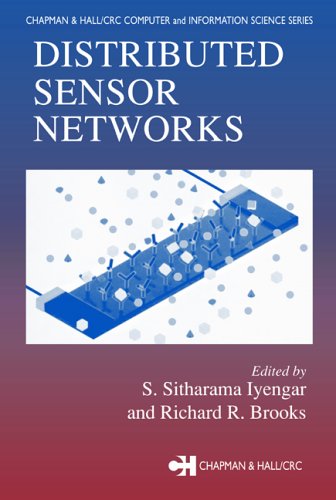
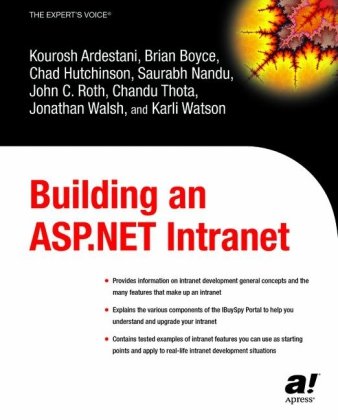
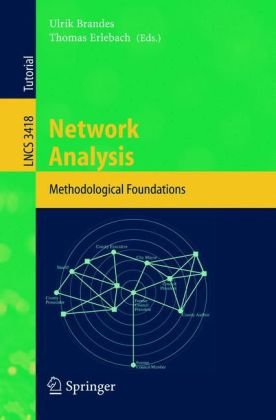


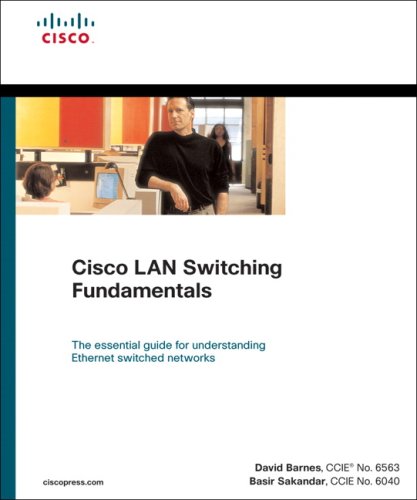
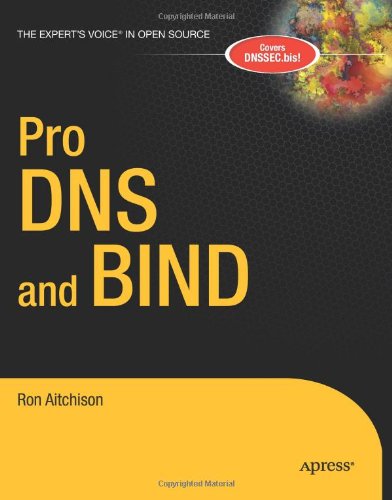
Reviews
There are no reviews yet.